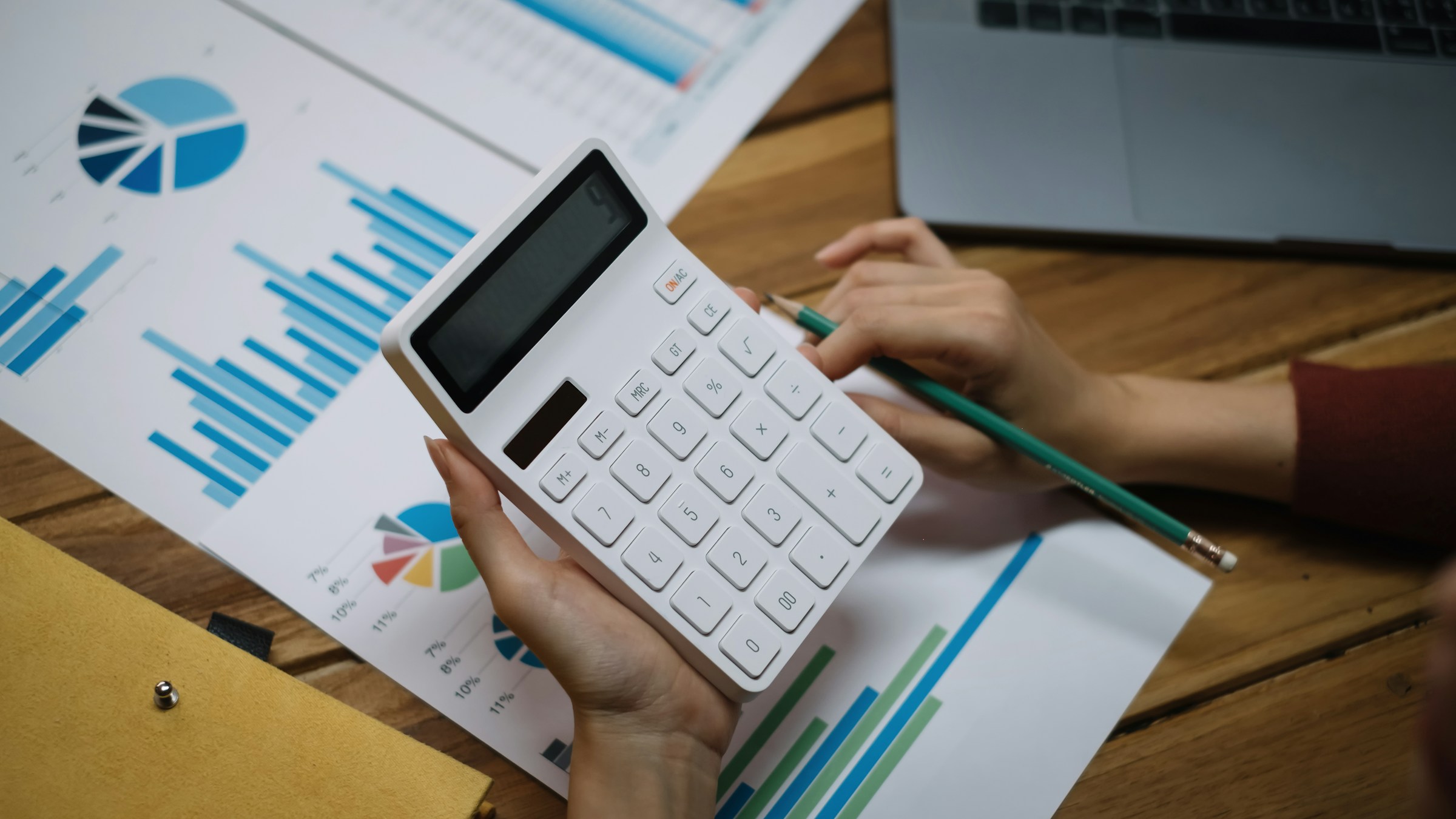
Let's cut straight to the chase: if you're a creative business owner who thinks numbers are the enemy of art, you're setting yourself up for failure. Yeah, I said it. And I can already hear the collective groan from graphic designers, musicians, and copywriters across Australia. But here's the truth bomb – understanding your finances isn't "selling out," it's ensuring you can keep creating without living on two-minute noodles.
So, buckle up, buttercup. We're about to dive into the seven financial metrics that could distinguish between your creative business thriving or taking an uncomfortably long nap. And no, I won't be sugar-coating this with flowery language or abstract concepts. We're talking cold, hard facts – the kind that'll keep your business alive long enough for you to make your magnum opus.

Before we discuss metrics, let's address the elephant in the room. There's this persistent myth that creatives and numbers don't mix—like oil and water or pineapple on pizza (fight me). But here's where it gets interesting: this isn't a biological fact. It's a self-fulfilling prophecy.
You see, when you tell yourself, "I'm not good with numbers," you're allowing yourself to ignore a crucial part of your business. It's like a chef saying they're not good with knives – it's a core skill, mate.
But here's the kicker: tracking these metrics doesn't mean you must become an accountant or sell your soul to the corporate devil. It means you're arming yourself with the knowledge to make better decisions. And last time I checked, better decisions lead to more creation freedom.
Funny how that works, isn't it?
Profit margin is the percentage of your revenue that turns into profit. In other words, it's what's left after you've paid all your expenses. And no, "exposure" and "experience" don't count as profit. I know, shocking.
Why should you care? Because a 5% profit margin means you're one bad month away from eating those two-minute noodles I mentioned earlier. Aim for at least 20% if you want a sustainable, creative business.
Calculating profit margin is simple:
(Revenue - Expenses) / Revenue = Profit Margin
So, if you made $10,000 on a project but spent $8,000 on expenses, your profit margin would be 20%. That's not bad, but there's room for improvement.
You have two options to increase your profit margin: increase your prices or decrease your expenses. And before you start sweating about raising your rates, remember this: clients who value your work will pay what it's worth. The ones who don't? Well, they're probably the same ones who think "exposure" is a valid form of payment.
Customer Acquisition Cost is how much you spend to get a new client. And unless you're living in a fantasy world where clients line up at your door, begging for your creative genius, you need to track this.
Why? Because if you spend more to acquire a client than you're making from them, you're in a world of trouble. It's like paying $20 for a $10 note and thinking you're making money.
Spoiler alert: you're not.
To calculate CAC, add up all your marketing and sales expenses for a period and divide it by the number of new clients you acquired in that same period. If you spent $1,000 on marketing last month and got 10 new clients, your CAC is $100.
Is that good? Well, it depends on how much those clients are worth to you. Which brings us to our next metric...
Customer Lifetime Value is the total money a client is expected to spend with you over the entire relationship. It's like looking into a crystal ball, but you're seeing dollar signs instead of your future spouse. Much more useful.
Why track CLV? Because it helps you decide how much you can afford to spend on acquiring and retaining clients. If a client's CLV is $10,000, suddenly, that $100 CAC we talked about earlier looks pretty good.
Calculating CLV can get complex, but here's a simplified version:
(Average Purchase Value) x (Average Purchase Frequency) x (Average Customer Lifespan) = CLV
So if a client spends an average of $1,000 per project, does two projects a year, and stays with you for 5 years, their CLV is $10,000.
What is the key to increasing CLV? Building strong relationships and consistently delivering value. In other words, do good work and don't be a jerk. A revolutionary concept, I know.
Utilization rate is the percentage of your working hours that are billable. It's a fancy way of saying, "How much of your time actually makes you money."
Why does it matter? Because time is your most valuable resource as a creative. Every hour you spend on non-billable work (like admin or scrolling through Instagram for "inspiration") is an hour you're not making money.
To calculate your utilization rate, divide your billable hours by your total working hours. If you worked 40 hours last week but only 30 were billable, your utilization rate is 75%.
Aim for a utilization rate of at least 70%. If you are any lower, you might need to streamline your processes or outsource some non-billable tasks. And if you're consistently above 80%? Congratulations, you're either a productivity machine or you're on the fast track to burnout. Neither is sustainable long-term.

Accounts Receivable Turnover measures how quickly you're getting paid. It's the financial equivalent of checking your mailbox for that cheque your grandma promised to send.
Why should you care? Because a high ARR means you're collecting payments quickly, which is great for your cash flow. A low ARR means you're essentially giving your clients interest-free loans. Last time I checked, you're not a bank.
To calculate ARR, divide your total credit sales by your average accounts receivable. Don't worry if that sounds like gibberish – the important thing is to keep an eye on how long it takes clients to pay you.
To improve your ARR, consider offering discounts for early payment, charging late fees, or simply being more proactive about following up on unpaid invoices. Remember, you've done the work – you deserve to be paid on time.
ROI for Marketing measures how much revenue you're generating compared to what you're spending on marketing. It's like planting seeds and counting how many plants grow, except the plants are made of money. Much better.
Why track it? Because blindly throwing money at marketing and hoping something sticks is not a strategy. It's gambling. And unless you're in Las Vegas, gambling is not a sound business practice.
To calculate marketing ROI, use this formula:
(Revenue Generated from Marketing - Marketing Costs) / Marketing Costs = ROI
So, if you spent $1,000 on a marketing campaign that generated $5,000 in new business, your ROI would be 400%. That's not too shabby.
The trick with marketing ROI is to track it for different channels and campaigns. Maybe your Instagram ads are killing it while your Google Ads are eating your budget faster than a hungry hippo. Knowing this allows you to double down on what's working and cut what's not.
Now, I know what you're thinking. "Great, you've just given me seven more things to worry about. Thanks a lot." But here's the thing—these metrics are not separate entities. They're all interconnected and depict your business's financial health.
The key is to create a dashboard where you can see all these metrics at a glance. It doesn't have to be fancy – a simple spreadsheet will do. Update it regularly (weekly or monthly, depending on your business), and soon you'll start seeing patterns and trends.
And that, my creative friend, is where the magic happens. Because once you can see these patterns, you can make informed decisions. You can spot problems before they become catastrophes. You can seize opportunities that you might have missed otherwise.
Look, I get it. You didn't start a creative business because you love spreadsheets and financial jargon. You did it because you have a passion, a vision, something you want to share with the world.
But here's the brutal truth: passion doesn't pay the bills. Talent alone won't keep the lights on. If you want your creative business to survive and thrive, you need to embrace the numbers.
These seven metrics are your roadmap to financial stability and success. They're the tools that will allow you to keep doing what you love without the constant stress of financial uncertainty.
So, what are you waiting for? It's time to dive in. Set up that spreadsheet. Start tracking these metrics. Your future self – the one who's running a successful, profitable, creative business – will thank you.
Remember, understanding your finances isn't "selling out." It's smart business. And last time I checked, being smart is pretty damn creative.
Nope. While there are plenty of flashy tools out there (and some of them are pretty great), you can start with a simple spreadsheet. Excel, Google Sheets, or even a good old-fashioned notebook can do the trick.
The important thing is to start tracking, not to have the fanciest system. As your business grows, you might want to invest in more sophisticated tools, but don't let the lack of software be an excuse not to start.
I hear you. Time is precious, especially for creative professionals. But here's a reality check: spending a few hours a month on these metrics can save you countless hours of stress and financial worry in the long run.
Financial stability gives you more freedom to focus on your creative work without worrying about making ends meet. Think of it as an investment in your creative future. And who knows? You might even find that diving into these numbers sparks some creative ideas. Stranger things have happened.
Sign up to receive relevant advice for your business.